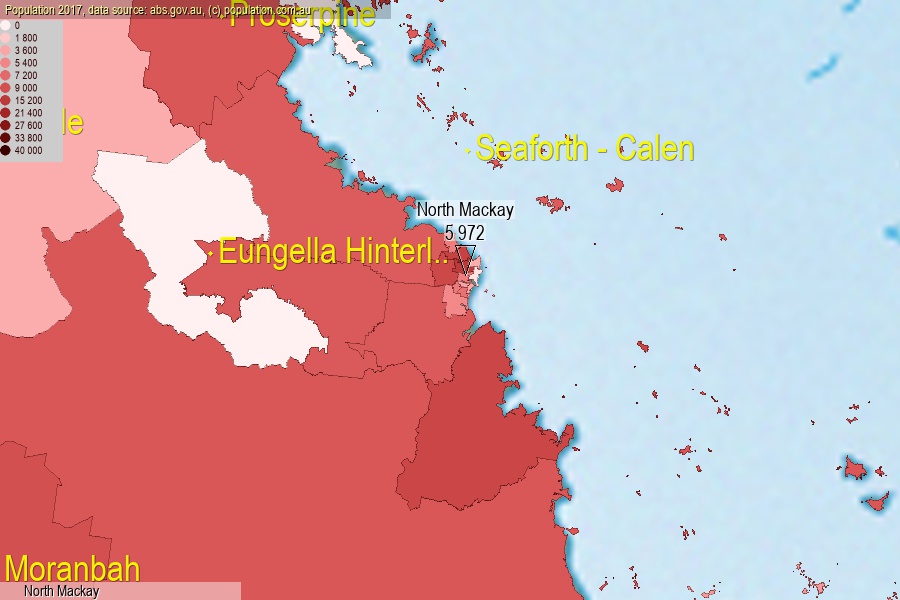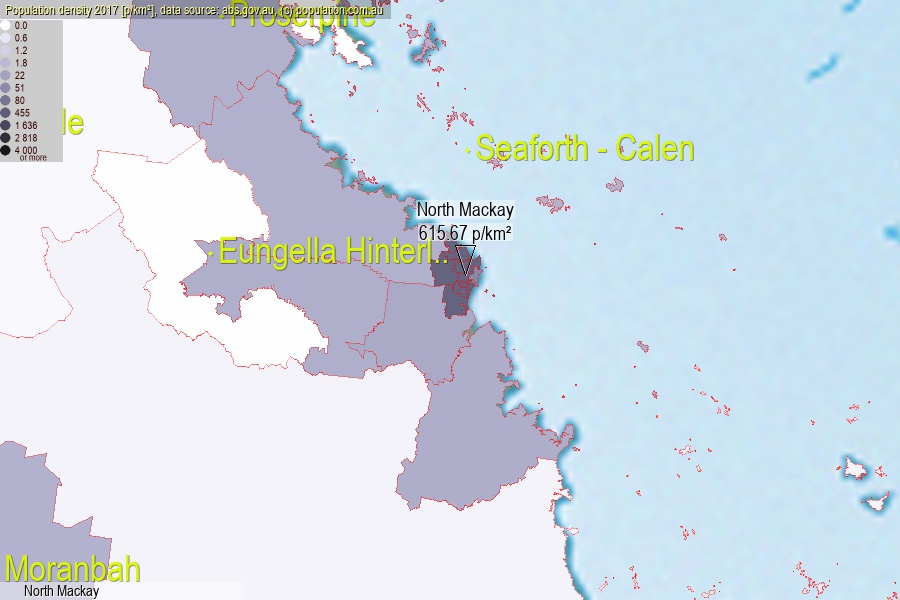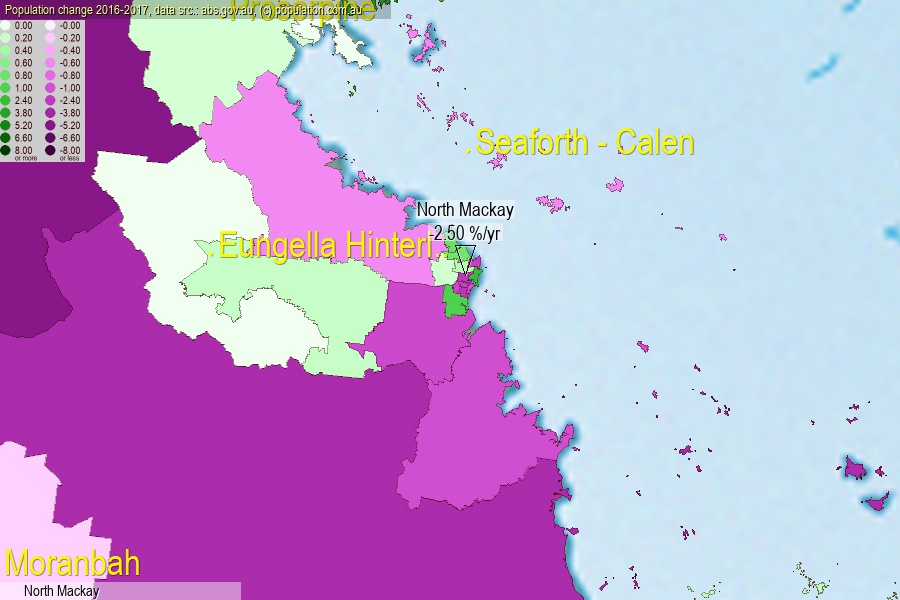 population.com.au
population.com.auLast official estimated population of North Mackay (as Statistical Area Level 2) was 5 972 people (on 2017-06-30)[2]. This was 0.02% of total Australian population and 0.12% of QLD population. Area of North Mackay is 9.70 km², in this year population density was 615.67 p/km² . If population growth rate would be same as in period 2016-2017 (-2.5%/yr), North Mackay population in 2025 would be 4 878. [0]



Click to enlarge. North Mackay is located in the center of the images.
Population [people], population density [p./km²] and population change [%/year] [2]
View borders » (new window) [4]
[1991-1992] -0.17 %/Yr.
[1992-1993] -0.75 %/Yr.
[1993-1994] -0.92 %/Yr.
[1994-1995] -1.10 %/Yr.
[1995-1996] +0.19 %/Yr.
[1996-1997] -1.92 %/Yr.
[1997-1998] -1.91 %/Yr.
[1998-1999] -1.66 %/Yr.
[1999-2000] -1.94 %/Yr.
[2000-2001] -1.74 %/Yr.
[2001-2002] +2.40 %/Yr.
[2002-2003] +2.09 %/Yr.
[2003-2004] +3.38 %/Yr.
[2004-2005] +3.38 %/Yr.
[2005-2006] +5.49 %/Yr.
[2006-2007] +1.12 %/Yr.
[2007-2008] +1.07 %/Yr.
[2008-2009] +0.94 %/Yr.
[2009-2010] +0.77 %/Yr.
[2010-2011] +0.79 %/Yr.
[2011-2012] -0.39 %/Yr.
[2012-2013] -1.54 %/Yr.
[2013-2014] -2.76 %/Yr.
[2014-2015] -3.81 %/Yr.
[2015-2016] -4.48 %/Yr.
[2016-2017] -2.50 %/Yr.
[0] Calculated with linear interpolation from officially estimated population
[1] Read more about SA2 and Australian Statistical Geography Standard (ASGS) on abs.gov.au
[2] Population data from Australian Bureau of Statistics (Population and density: 2017; change: 2016-2017)
[3] Digital Boundaries: Australian Statistical Geography Standard (ASGS) 2016.
[4] Border coordinates are simplifyed using Ramer-Douglas-Peucker algorithm.